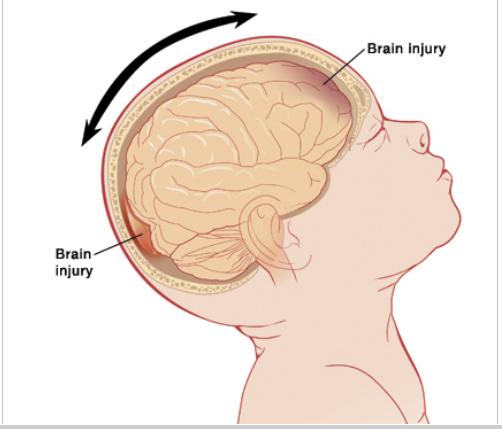Vigorously shaking infants or even toddlers can cause severe, irreparable damage and often leads to the child’s death.
It is foolish to try punishing young babies, because they will not understand the purpose of punishment. The only result would be inflicting harm upon them. However, this is usually not the reason babies are shaken.
Babies are usually shaken because they will not stop crying. The parent or guardian might try shaking the baby to stop its incessant wailing in the middle of the night. The sad truth is that this method does successfully stop the baby’s crying, but it does so at great cost.
When a newborn baby is shaken, its head rolls around without stopping, because its neck has not grown strong enough to support its head. The weight of the baby’s head combined with the shaking can easily lead to a broken neck. At the same time, the baby’s brain is pitched back and forth. This can cause the child’s brain to strike the inside of its skull, which leads to ruptured blood vessels, ruptured nerves, and torn brain tissue.
When a baby is shaken, his or her brain strikes the front and back of the skull, causing serious brain damage.
The good news is that rocking a child or bouncing one on your knee will not cause brain damage. However, parents should still be gentle with the way they play with babies. Swinging them around and throwing them in the air can cause brain damage.
If a child is thrown in the air or swung around over and over again brain damage will continue to occur. The consequences are often undetectable for many years, and sometimes they do not show up until the child begins preschool or kindergarten. Children that were shaken as babies or were played with too roughly can have a wide range of health issues, ranging from seizures to mental retardation.
One study, conducted in 1999 by Jane D Kivlin and her associates, examined the ophthalmological disorders of children who reportedly had Shaken Baby Syndrome, including clinical findings, autopsy findings, and the mental and physical statuses of survivors.
The researchers examined the damage that shaken baby syndrome caused to the children’s vision. They observed 123 children who were reported to have Shaken Baby Syndrome. According to their results, retinal hemorrhages were detected in 83% of the children. Retinal hemorrhaging was strongly correlated with the child’s demise. They concluded that retinal hemorrhages in infants could be a sign of abuse.
The National Center for Biotechnology Information conducted a study that compared the rate of occurrences of Shaken Baby Syndrome, also known as Abusive Head Trauma (AHT) between military families and civilian families. This study showed that there are several risk factors for AHT, including young maternal age and a lower pay grade. Risk factors for the child included male sex, premature birth, and a diagnosed major birth defect.
This study also showed that there was a slightly larger rate of occurrence of AHT among military families. The NCBI reported that among military families, the rate of occurrence was close to 34 per every 100,000 live births, whereas among civilians the rate was about 26 cases per every 100,000 live births. Though the military families were found to have a higher rate of occurrence, this study did not prove that children born to military families are more likely to be roughly shaken as babies.
“One frightening truth about AHT is that it is often mistaken for common illnesses.”
One frightening truth about AHT is that it is often mistaken for common illnesses. In 2013, another study was conducted by researchers Lopes, Eisenstein, and Williams in Brazil called “Abusive Head Trauma in Children: A Literature Review.” They found that there are no specific signs for this kind of abuse, which makes it easy for pediatricians to shrug off the symptoms of AHT as common ailments. The child would then receive either the wrong care or no care when it needs it most.
Lopes and associates concluded that professionals should be trained to identify the signs of shaken baby syndrome early in development. The researchers argue that Brazilian parents should also be educated on child development, especially on their infant’s crying pattern. This would helpfully keep parents from turning to shaking their babies to make them stop crying.
Now that you know the facts of Shaken Baby Syndrome, here are some useful tips for parents with children between the ages of 0 and 5:
No matter how much the child is crying, do not shake them. This can cause catastrophic damage to their little brains, and it often leads to death.
Learn your child’s sleeping and crying patterns.
Try the “cry it out method,” which refers to a sleep training technique that encourages the baby to fall asleep on its own. Go to this link for a description of the “cry it out” method:
Consult the Web or baby books for other healthy ways to develop healthy sleeping patterns for your baby.
Do not punish an infant physically. This will only harm the infant.
Fuente: lakeparkpolice.com
